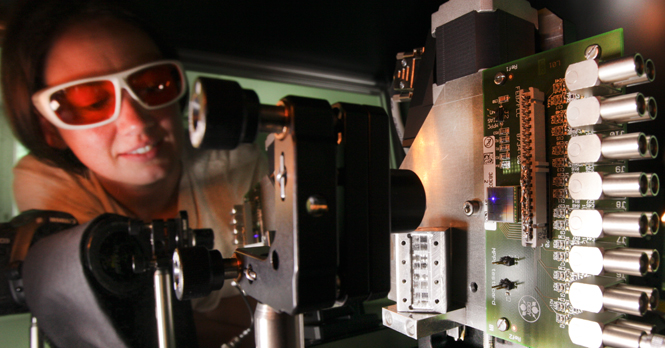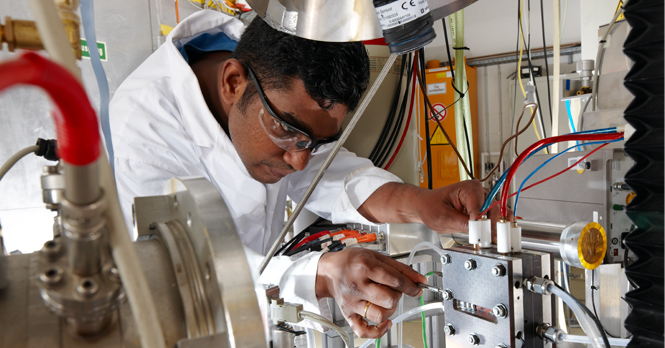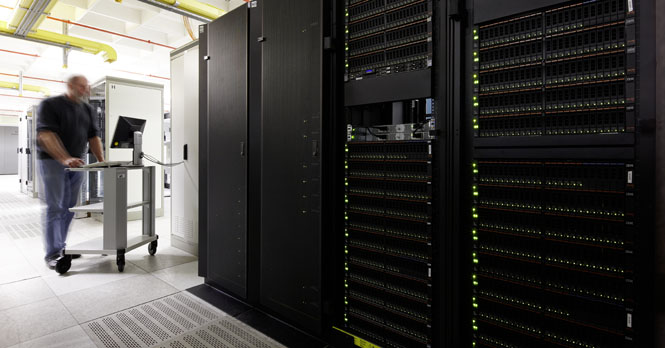URL: https://v1.desy.de/site_www-desy/content/about_desy/desy/innovations_for_society/aufgabenuebersichtsplan_v1_20220131_eng.html/@@siteview
Breadcrumb Navigation
Innovations for society
Innovations for society
Our economy depends on innovations. Without inventions and catchy ideas, new and commercially successful products would be inconceivable in our technology-oriented society. DESY contributes to this innovation process in a diversity of ways. On the one hand, knowledge derived from basic research provides a broad, fertile ground for future innovations. On the other hand, some experiments are directly related to applications – for example, when industrial firms book measurement time on DESY’s X-ray sources to conduct advanced product development. Furthermore, there are the spin-offs that evolve from some research projects, such as the accelerator and detector technologies developed at DESY that can also be applied to innovative medical high-tech equipment. These technologies hold the promise of more accurate diagnoses and more readily tolerated therapies, for instance in cancer treatment.
An important aspect is DESY’s cooperation with firms that are helping to develop its accelerators and detectors. One example is the construction of the superconducting TESLA accelerator modules. DESY generates know-how among the participating high-tech firms. The companies benefit from the cooperation by coming up with new production processes, for example, as the components and processes they develop for DESY require absolute cutting-edge technology and sometimes entirely new technical solutions. The latter can subsequently become useful for manufacturing other products, for instance in the medical industry, in radar and satellite technology and in chemical engineering. As a result, it’s not uncommon for DESY’s industrial partners to gain a technological advantage over their competitors.
Mini-detectors for medical use
DESY technology for the doctor’s practicePhysicist Erika Garutti’s job is to develop highly sensitive sensors for future particle detectors used in basic research. However, the technology can also be useful in a medical diagnostic system, the PET scanner. The idea evolved into a successful European research project conducted by DESY and CERN in conjunction with three medical centres. One application of PET scanners is the early diagnosis of tumours.


Fuel cells in X-ray light
Experts are optimizing environmentally friendly technologies of the futureFuel cells convert hydrogen or methanol into electric current efficiently and without environmental harm, and may someday endow electric cars with longer ranges. Materials researchers at Technische Universität Darmstadt are studying fuel cells using high-intensity X-rays from the accelerator. Their findings give manufacturers indications on how to develop improved, more effective fuel cells.
The researchers bring complete, intact fuel cells to Hamburg to examine them in detail with X-rays. They are particularly interested in the aging process of the platinum catalyst, which ensures that hydrogen and oxygen molecules are split into atoms. These atoms then react to form water, a process that releases energy in the form of electric current. The finely collimated X-rays enable the researchers to observe what is happening on the surface of the platinum particles. The experts can also identify locations in the fuel cell where the aging process is especially fast – which is of fundamental importance for manufacturers striving to develop systems with a longer service life.

Smart storage
DESY scientists are developing sophisticated data management softwareThe LHC produces immense volumes of data. A single year’s data would fill more than a million DVDs. To manage this data torrent, information scientists use a new computer concept: the Grid, a variety of distributed computing. In this system, dozens of computing centres around the globe interact synergistically.
DESY scientists are participating in the continual expansion of the Grid. Their specialty is the organization of the data storage. That’s a major challenge, because the storage resources on the Grid must not only receive and record vast data volumes reliably, but also make them accessible from anywhere on Earth. “dCache” is a software package developed mainly by DESY – sophisticated technology for managing large data volumes. At present, about half of all LHC data are stored on one of the 60 dCache systems around the globe.
DESY is developing the software in conjunction with international partners, especially the Fermilab research centre in the USA and the Nordic Data Grid Facility (NDGF). dCache is now also used in fields other than particle physics, for instance at the European radio telescope LOFAR. Keen interest is also evident among commercial companies.


